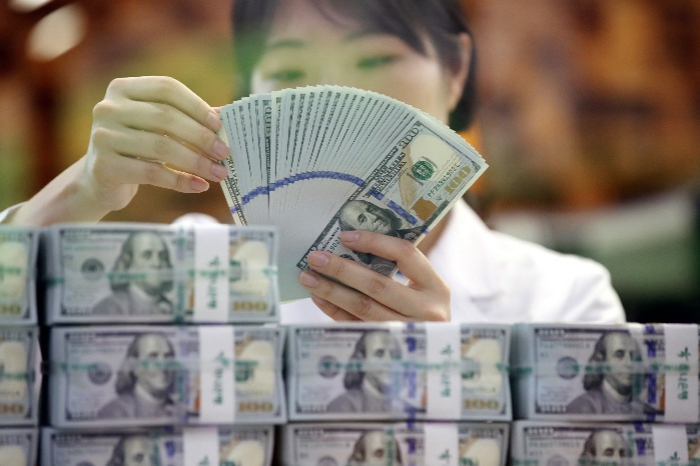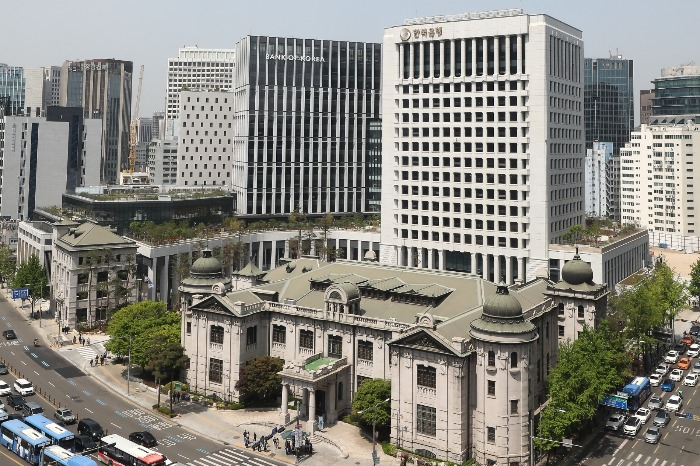S.Korea’s direct investment abroad hits record high in Q1 2023
Korea’s direct investment in foreign assets amounted to $663.7 billion in Q1, while foreigners’ direct investment in Korea dropped
By May 24, 2023 (Gmt+09:00)
LG Chem to sell water filter business to Glenwood PE for $692 million


Kyobo Life poised to buy Japan’s SBI Group-owned savings bank


KT&G eyes overseas M&A after rejecting activist fund's offer


StockX in merger talks with Naver’s online reseller Kream


Mirae Asset to be named Korea Post’s core real estate fund operator



South Korea’s net international investment position (NIIP) increased in the first quarter on the country’s record-high direct investment abroad driven by a recovery in global stock markets, according to data released by the country's central bank on Wednesday.
But an uptick in short-term debt, coupled with a fall in foreign direct investment in Korea, has raised concerns about the country’s fiscal soundness.
The outstanding amount of Korea’s investment in foreign assets reached $2.2 trillion in the first quarter ending in March this year, up $31.7 billion from the previous quarter, according to preliminary data released by the Bank of Korea (BOK).
The outstanding balance of Korea’s direct investment and portfolio investment jumped by $16.2 billion to the largest-ever $663.7 billion and by $36.7 billion to $776.6 billion, respectively, on the recovery in global stock markets.
The outstanding amount of foreign investment in Korea as of the end of the first quarter also added $30.0 billion on-quarter to $1.4 trillion, but offshore investors’ direct investment dropped by $1.9 billion, stoking concerns that Korea may be losing its appeal to foreign investors amid growing uncertainties over its export-reliant economy.
But foreigners’ investment in Korean equity securities expanded by $37.4 billion to $849.9 billion on the recovery of Korean stocks.
As a result, Korea’s NIIP, the difference between a nation's stock of foreign assets and foreign holding of the nation's assets, in the quarter amounted to $773 billion, $1.7 billion higher than the previous quarter.

Considering that the country’s total nominal economic output for last year was $1.6 trillion, Korea’s NIIP makes up 46% of its gross domestic product, meaning Korea is a creditor country, explained the central bank official on Wednesday.
Korea’s external assets and external debt in the first three months of this year dropped $500 million on-quarter and $300 million, respectively, to $1.0 trillion and $665.0 billion.
But the country’s short-term debt increased.
The ratio of Korea’s short-term debt to foreign reserves rose by 1.4 percentage points to 40.8% in the first quarter ending March this year, reversing its course from the previous two quarters despite a rise in reserve assets.
A higher ratio means weaker debt-serving capabilities or vice versa.
It fell to 41.1% and 39.3% in the third and fourth quarters of last year, respectively, from 42.3% in the second quarter.
The ratio of short-term debt to total external liabilities also inched up 1.1 percentage points to 26.1% over the same period. It dropped in the past two quarters.
Short-term debt jumped in the first quarter due to one-off increased short-term borrowings by Korean financial institutions' overseas operations to cover arbitrage trading in late March, the central bank explained.
Coupled with Korea’s ninth-largest foreign reserves in the world, the country's more than 40% NIIP to its GDP makes Korea’s fiscal condition sound despite the recent uptick in short-term external borrowings, the BOK official said.
Write to Jin-gyu Kang at josep@hankyung.com
Sookyung Seo edited this article.
-
 Korean stock marketFunds from West to emerging Asia power S.Korean stocks
Korean stock marketFunds from West to emerging Asia power S.Korean stocksMay 22, 2023 (Gmt+09:00)
3 Min read -
 Business & PoliticsS.Korea to offer subsidies to foreigners investing in advanced technologies
Business & PoliticsS.Korea to offer subsidies to foreigners investing in advanced technologiesApr 26, 2023 (Gmt+09:00)
2 Min read -
 EconomyS.Korea pledges steps to attract more foreign investment
EconomyS.Korea pledges steps to attract more foreign investmentMar 08, 2023 (Gmt+09:00)
1 Min read


